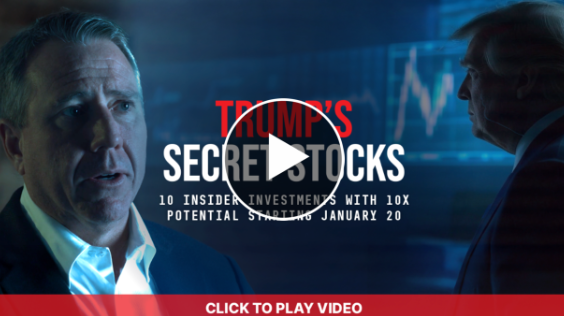
ATTENTION: CONCERNED AMERICANS
CONGRESS TRADES REVEAL 2025 MARKET PLAYBOOK

Tech Giants and AI Lead Year-End Surge in Congressional Trading as Members Load Up on NVIDIA, Microsoft
December 31, 2024
EDITOR'S NOTE: This analysis examines congressional trading patterns from publicly available disclosure data. While this information can provide valuable in sights, investors should conduct their own due diligence and not base investment decisions solely on congressional trading activity.
Most Actively Traded Stocks
The congress trading data reveals fascinating patterns in stock preferences. Microsoft (MSFT) dominates the trading activity, with particular interest around its AI developments and cloud services growth. NVIDIA (NVDA) has seen intense trading activity, reflecting the broader market's focus on AI technology, with several members making significant purchases in the $15,000-$50,000 range. Tesla (TSLA) trades show high volatility in both directions, with some members like Marjorie Taylor Greene making strategic entries during price dips.
The tech sector's dominance in congressional trading extends beyond these giants. Apple (AAPL), Amazon (AMZN), and Meta (META) consistently appear in trading records, often with correlated buying patterns suggesting broader sector-based strategies rather than individual stock picks.
Trading Patterns by Members
The trading styles of different congress members reveal distinct approaches to market participation. Marjorie Taylor Greene has emerged as one of the most active traders, showing a sophisticated approach to portfolio diversification. Her recent trading pattern suggests a strong belief in tech sector growth, with particular emphasis on AI and semiconductor companies. Her trades are typically measured, staying within the $1,001-$15,000 range, suggesting a systematic approach to position building.
Josh Gottheimer's trading activity stands out for its complexity, particularly in options trading. His recent large-scale Microsoft options trades, often exceeding $1 million in value, indicate both sophisticated market understanding and high conviction in tech sector growth. His trading pattern shows careful attention to market timing, often making counter-cyclical moves.
Rohit Khanna's trading activity is notable for its family-wide approach, with coordinated trading across personal, spouse, and dependent accounts. This strategy appears aimed at maximizing tax efficiency and diversification opportunities. His recent focus has been heavily weighted toward tech sector growth stocks, particularly in companies with strong AI positioning.
Party Affiliation Patterns
The trading patterns show distinct differences along party lines, though perhaps not as stark as one might expect. Republican members generally show stronger interest in traditional energy companies, defense contractors, and value stocks. Their trading sizes tend to be larger, often in the $50,000-$100,000 range, suggesting more concentrated position-taking.
Democratic members show greater activity in renewable energy, technology, and emerging sectors like electric vehicles and artificial intelligence. Their trading patterns often involve more frequent but smaller positions, typically in the $1,001-$15,000 range, indicating a more diversified approach.
Sector Preferences
The technology sector dominates trading activity across both parties, but with interesting nuances. Republican members tend to focus on established tech giants like Microsoft and Apple, while Democratic members show more interest in emerging tech companies and renewable energy technology. The healthcare sector sees broad bipartisan activity, with particular focus on pharmaceutical companies and biotechnology firms.
The financial sector trading reveals interesting timing patterns, with increased activity often corresponding to Federal Reserve announcements or major economic data releases. Energy sector trading shows clear partisan differences, with Republicans favoring traditional energy companies while Democrats lean toward renewable energy plays.
A notable trend is the increasing focus on artificial intelligence-related companies across all members, regardless of party affiliation. This suggests a broad recognition of AI's transformative potential across industries. The semiconductor industry, in particular, has seen heightened interest, with companies like NVIDIA, AMD, and Intel featuring prominently in trading activity.
What This Means for Investors
The trading patterns of Congress members offer several valuable insights for retail investors. First, the heavy focus on AI-related companies across party lines suggests strong institutional confidence in the sector's long-term growth potential. Companies like NVIDIA, Microsoft, and AMD are receiving particular attention, indicating these may be key players in the AI transformation.
|
LAST CHANCE - NEW YEAR'S 80% OFF
$19 for a FULL YEAR of stock picks?!You read that right. We're offering you the chance to subscribe to Behind the Markets for an ENTIRE YEAR for just $19. But why? Because there is a very small window of time... as little as 25 days from now... That will change the market forever. And to make sure that EVERY hard working American has the opportunity to make a killing in 2025 - We've reduced the price of our service to just $19 for a year. AND we're offering a full 30-day money back guarantee - so you have nothing to lose. But hurry, this sale ends January 1st. So if you want to learn about a stock that could soar as soon as January 20th… |
The bipartisan interest in healthcare, particularly in companies like Johnson & Johnson and Eli Lilly, suggests potential opportunities in established healthcare companies with strong research pipelines. The sector's defensive characteristics appear increasingly attractive as economic uncertainties persist.
Congress members' increasing interest in semiconductor stocks might signal recognition of the sector's strategic importance, particularly given recent legislation supporting domestic chip production. Companies like NVIDIA, ASML, and Applied Materials have seen consistent congressional buying.
However, investors should note some potential warning signs. The relatively low trading activity in regional banks might indicate concerns about the sector's stability. Similarly, the selective approach to energy stocks, with a focus on companies with strong renewable portfolios alongside traditional energy assets, suggests a nuanced view of the energy transition.
The pattern of smaller, more frequent trades by many members could indicate a strategy of dollar-cost averaging and careful position building – an approach retail investors might consider emulating. The preference for established, large-cap companies among most Congress members also suggests a focus on quality and stability over speculation.
Notably, members with consistent trading success, like Josh Gottheimer and Marjorie Taylor Greene, tend to maintain diversified portfolios while making targeted bets in sectors where they might have informational advantages. This balanced approach – combining broad market exposure with selective concentration – might offer a template for retail investors.
EDITOR'S NOTE: Trading patterns of Congress members should be viewed as one of many inputs in investment decision-making. Past trading activity does not guarantee future market performance. Investors should consider their own financial situation, risk tolerance, and investment objectives when making investment decisions. The complexity of congressional trading, including family accounts and various financial instruments, may not be fully replicable by retail investors.
did this article make sense? If so...
YOU NEED TO CLICK BELOW...
|
TRENDING STORIES...
According to Wall Street legend Whitney Tilson, an extremely rare window in the markets is about to open. It's an often-misunderstood market setup we've only seen 13 times since 1920. The last time this happened, it minted a million brand-new millionaires – in a single year.
But Tilson says this unique window in the markets could close much sooner than anyone realizes, leaving most investors in the dust, while making a select few incredibly rich. Get our No. 1 stock (with 500%-plus upside potential) for this rare market event now.
When the Government Releases Certain Data, Either Good or Bad...You Can Target Up to +383% Overnight
(See the Proof!) New Trade Goes LIVE THIS TUESDAY at 2 pm
See this facility? Billionaires like Ken Griffin, Ray Dalio and Steven Cohen are pouring a ridiculous amount of money into the company behind this A.I. project…Because it will supply a key piece of advanced A.I. technology for Elon Musk’s new venture, xAI. Click here to see the details.
Disclaimer
Disclaimer for MarketsAndPolitics.com
MarketsAndPolitics.com, a brand under Market Insiders Media dba, operates under the parent company Sandpiper Marketing Group, LLC. Please be advised that MarketsAndPolitics.com is not registered as an investment adviser or broker-dealer with the United States Securities and Exchange Commission or any state regulatory agency. We rely on the "publisher's exclusion" from the definition of investment adviser as set forth in Section 202(a)(11) of the Investment Advisers Act of 1940, as amended, as well as corresponding state securities laws. Consequently, MarketsAndPolitics.com does not offer or provide personalized investment advice.
The information we provide is based on our opinions, statistical and financial data, and independent research of public information. Our materials are intended for informational purposes only, and no mention of a specific security in any of our content constitutes a recommendation to buy, sell, or hold that or any other security. Any information deemed to be investment opinion is impersonal and not tailored to the investment needs of any individual.
Please be aware that MarketsAndPolitics.com does not promise, guarantee, or imply that any information provided through our websites, newsletters, reports, or printed material will result in profit or loss. We strongly encourage you to seek personal advice from your professional investment, tax, or legal advisors and to conduct your own due diligence and independent investigations before acting on any information we publish or making any investment decision. Only you and your professional advisors can determine the level of risk appropriate for you. Penny stocks, in particular, are inherently speculative investments, and you should be prepared to lose your entire investment.
Employees, owners, and/or writers of MarketsAndPolitics.com may own positions in the equities, options, and/or securities mentioned in our content. However, no associated employees will intentionally engage in any transaction that directly or indirectly competes with the interests of our subscribers. MarketsAndPolitics.com may be compensated for publishing information about companies referred to in our reports, newsletters, and websites, and we provide full disclosure of such compensation.
Furthermore, please note that any content marked as "Sponsor" may be paid for and is not endorsed or warranted by our staff or company. Specifically, we are compensated five dollars per click by i2i LLC for clicking on the ad for AUST Mining Company. The content in our emails is for educational or entertainment use and is not a substitute for professional advice or an offer to buy or sell any securities. Neither the publisher nor the editors are registered investment advisors (RIA’s) and do not provide personalized counseling. Be sure to conduct your own careful research and consult with your advisors before taking any action based on our content. By opening our emails or clicking any links contained therein, you are reconfirming your opt-in status, which is part of your free subscription.




